
Brooks Catamount 4 Review
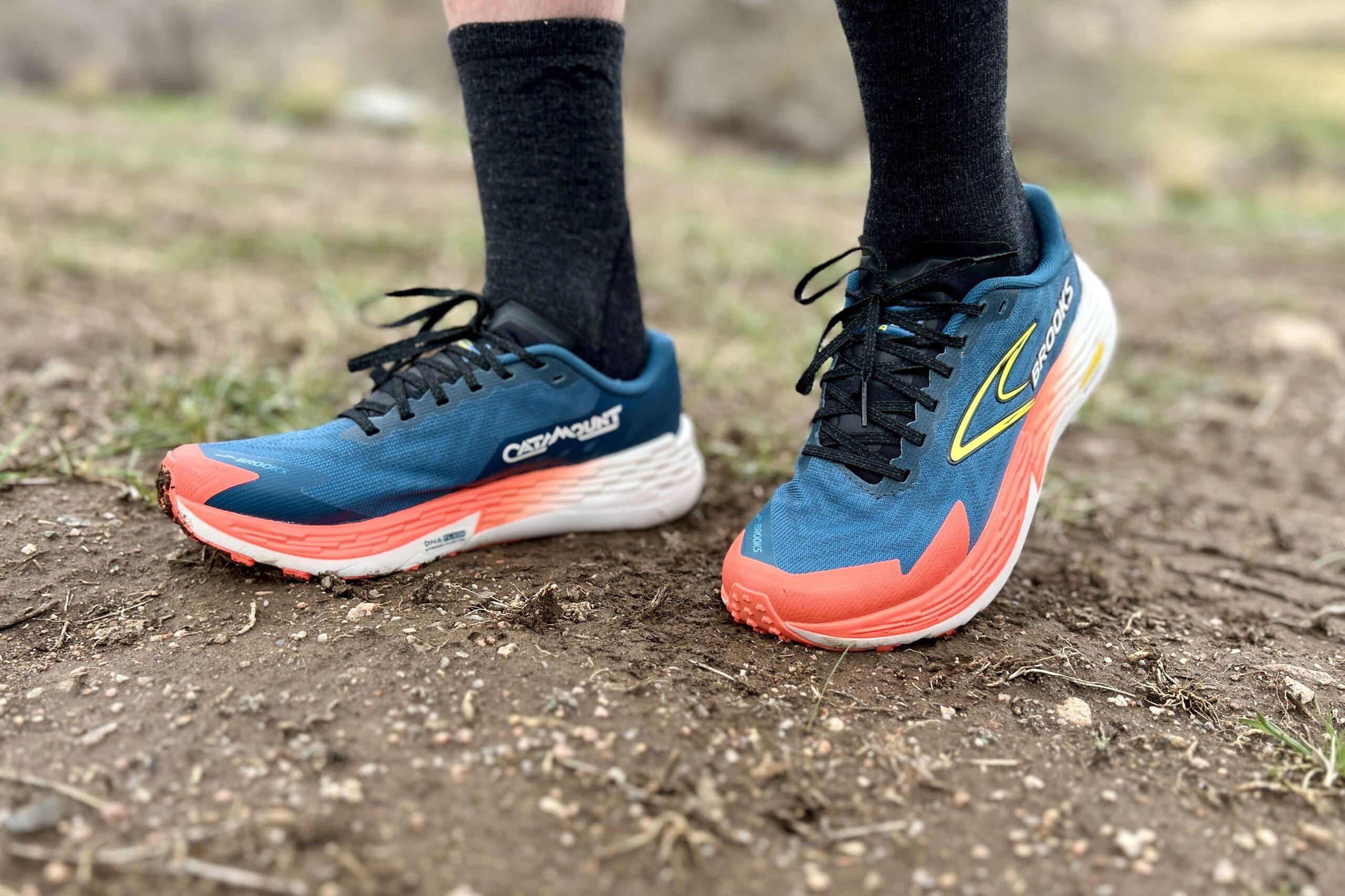
Bottom Line
The Brooks Catamount 4 takes our top spot on our best trail running guide for men as one of the lightest and most versatile trail runners we’ve tested. This shoe is Editor Ian Krammer’s all-time favorite. He’s accumulated over 300 miles on his pair. Their impressively low weight, surprising durability, solid comfort, and breathable uppers are perfect for everything from short, fast jogs to long endurance races on mixed terrain.
Brooks updates the plate design for this version, making the Catamount feel more responsive and snappy – without sacrificing comfort. It gains an extra 2mm of nitrogen-infused foam underfoot that beefs up the heel a bit and gives a slightly smoother ride. These are one of the lightest and fastest pairs we’ve tested, making them feel comfortable and airy for hours of running. Combined with an excellent lacing system, breathable mesh, and a refreshed lug pattern, the 4’s are at home on most trails.
However, this model isn’t perfect. It’s a bit stiff on flat terrain, and the traction isn’t as reliable on softer routes with lots of sand and mud. It has plenty of foam, though it may miss the mark for those who prefer a super plush ride. The fit may turn some people off, since it’s fairly narrow, and it doesn’t come in wide. Additionally, these shoes come in limited colorways, and they’re spendier than others.
Still, the Brooks Catamount 4 are a winner in our book. You get precisely what you pay for with these shoes: energetic, fun trail runners built for fast movement on long runs. Those looking for a lightweight shoe that’s breathable and durable can’t go wrong with these.
Quick Specs
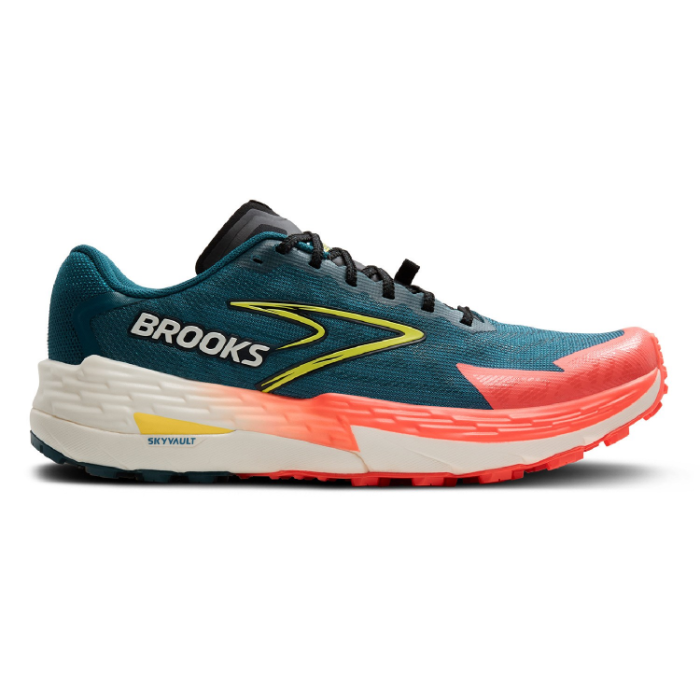
Brooks Catamount 4
Best Trail Runners Overall
CleverHiker Rating:
4.9/5.0
Price:
$170
Weight (Pair):
1 lb. 3 oz.
Heel-to-Toe Drop:
6 mm
Cushioning:
Moderate
Best For:
Mixed Terrain
Pros
- Lightweight
- Excellent traction for steep ascents / descents
- Durable materials
- Comfortable on long runs
- Good for mixed pavement & trail
- Breathable uppers
- Larger toe box
- Protective toe cap
- Excellent laces
Cons
- Expensive
- Less cushioning than some
- A bit narrow
- Plate makes shoe feel a bit stiff
- No heel loop
- Traction falls short on soft terrain
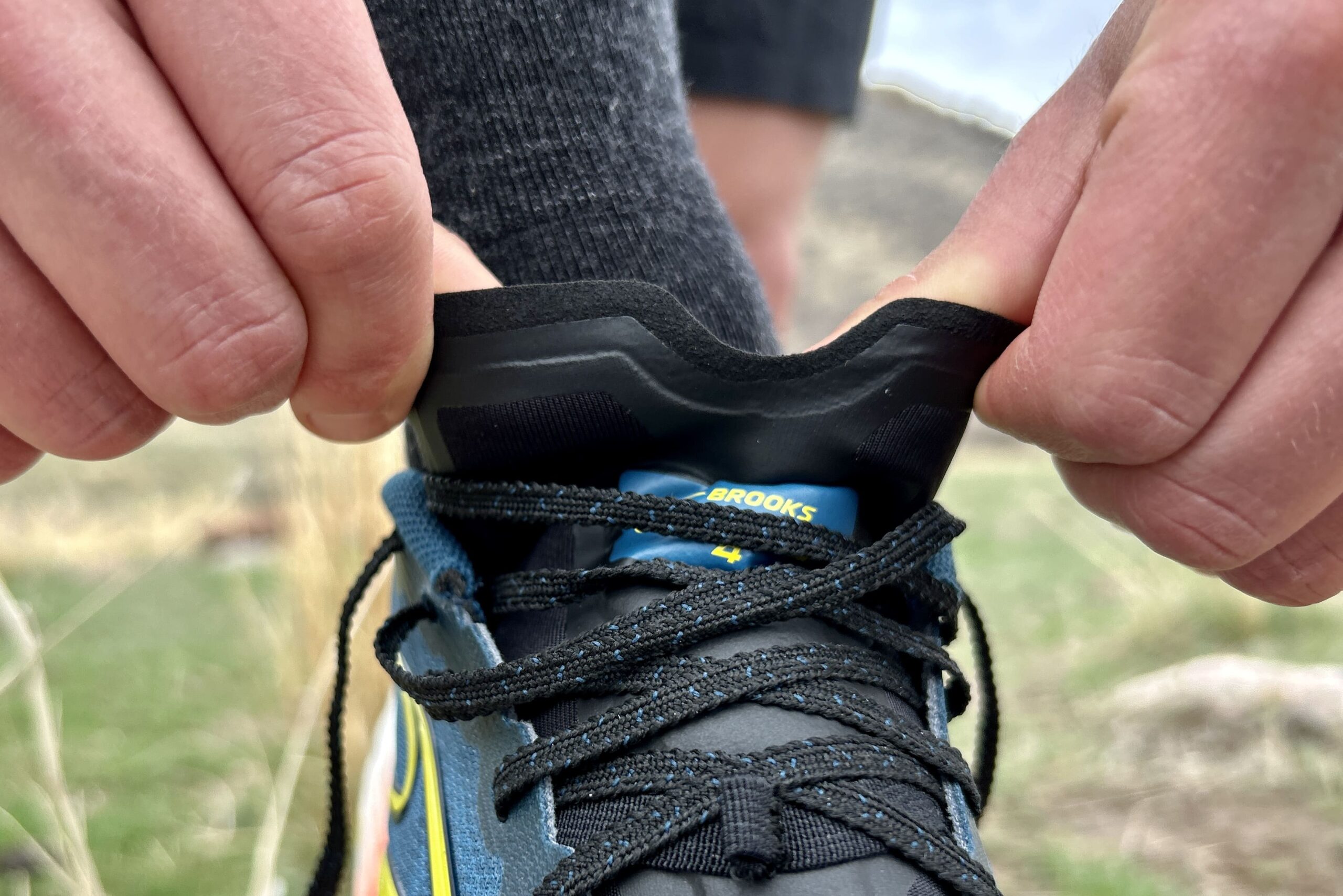
Comfort
The Catamount 4 is comfortable out of the box. Editor Ian Krammer took them on a 10-mile run in the Denver foothills immediately, and he found the arch support and cushioned, slightly higher stack height – 34 mm – made for a pleasant ride. The slightly wider toebox offered plenty of room without feeling sloppy, and the heel cuff felt soft but supportive. There’s plenty of arch support without feeling overbearing.
We’re also big fans of the newly redesigned tongue. It’s thinner, has a V-cut in the middle, and molds well to the foot. The stack height is 2 millimeters taller than the last iteration for a nice balance between comfort and performance.
Plust, we love the shoelaces for their nuanced pressure. They have ribbed edges – which directly translates to a nuanced, locked-in fit – so we didn’t need to constantly adjust the shoe. Double eyelets at the ankle offer a snug fit.
The downside? The 4’s are a bit firm. Their redesigned propulsion plate means the Catmount rides a little stiff on cruiser trails, making it feel less forgiving on asphalt and hard-packed singletrack, where these felt like overkill during testing. Additionally, the 4’s don’t have a heel loop to make them a bit easier for putting the shoe on, and they don’t come in wide sizing.
However, none of these are dealbreakers for comfort. This shoe earns a strong score for comfort, and we think they will work well for most feet and running style.
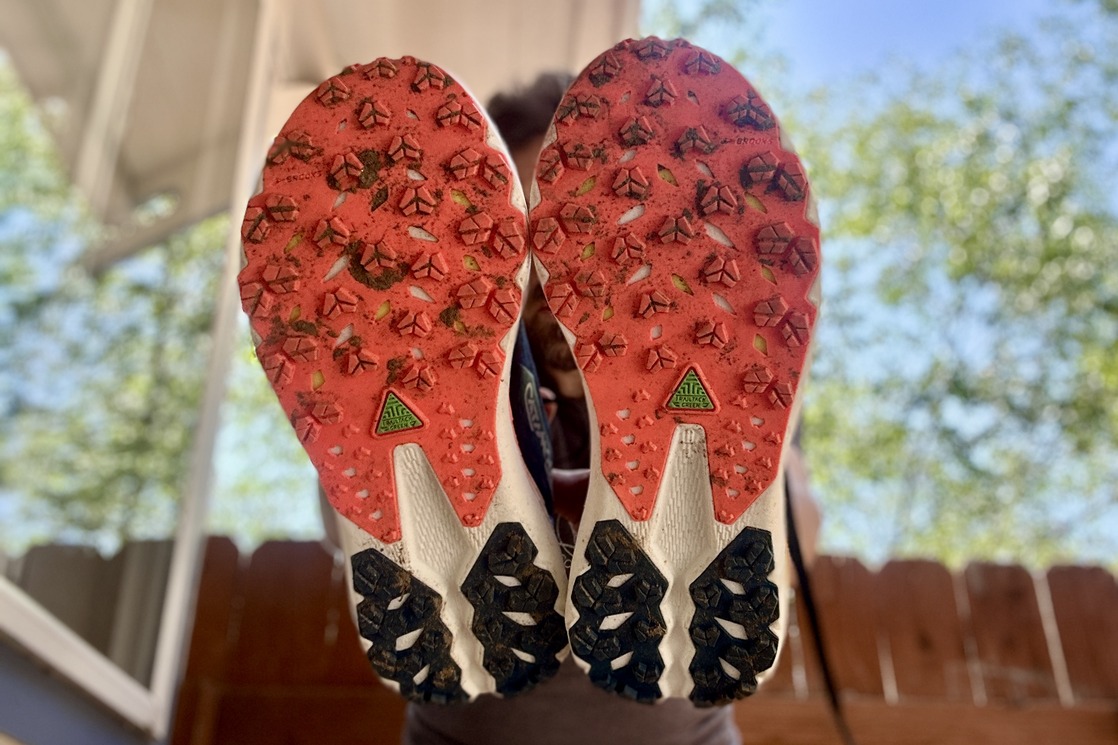
Traction
Brooks overhauled the Catamount 4 traction pattern and redesigned the propulsion plate, a combo that kicked it to the top of our list. Ian finds during testing that these shoes excels on steep uphills and downhills, and perform well on technical terrain, too. The lugs are the same depth as the Catamount 3’s – 3.5mm – but with a slightly blockier shape and small divots, we find the grip is more reliable. We find they shine on routes with short rocky and root-filled sections and established singletrack.
Ian hikes a lot of Colorado peaks over 13,000’ with thousands of feet of vert. The Catamount hits the sweet spot for him with a slightly longer toe design that prevents jamming on steep descents. Plus, lugs are most concentrated in the forefoot, giving extra bite where it’s needed for pushing off.
But the outsole isn’t the stickiest or deepest on the market, so these shoes fall short on muddy and sandy terrain. In places full of loose terrain, a deeper, wider-set lug pattern is preferable, although the Catamount 4 does shed debris quickly and easily.
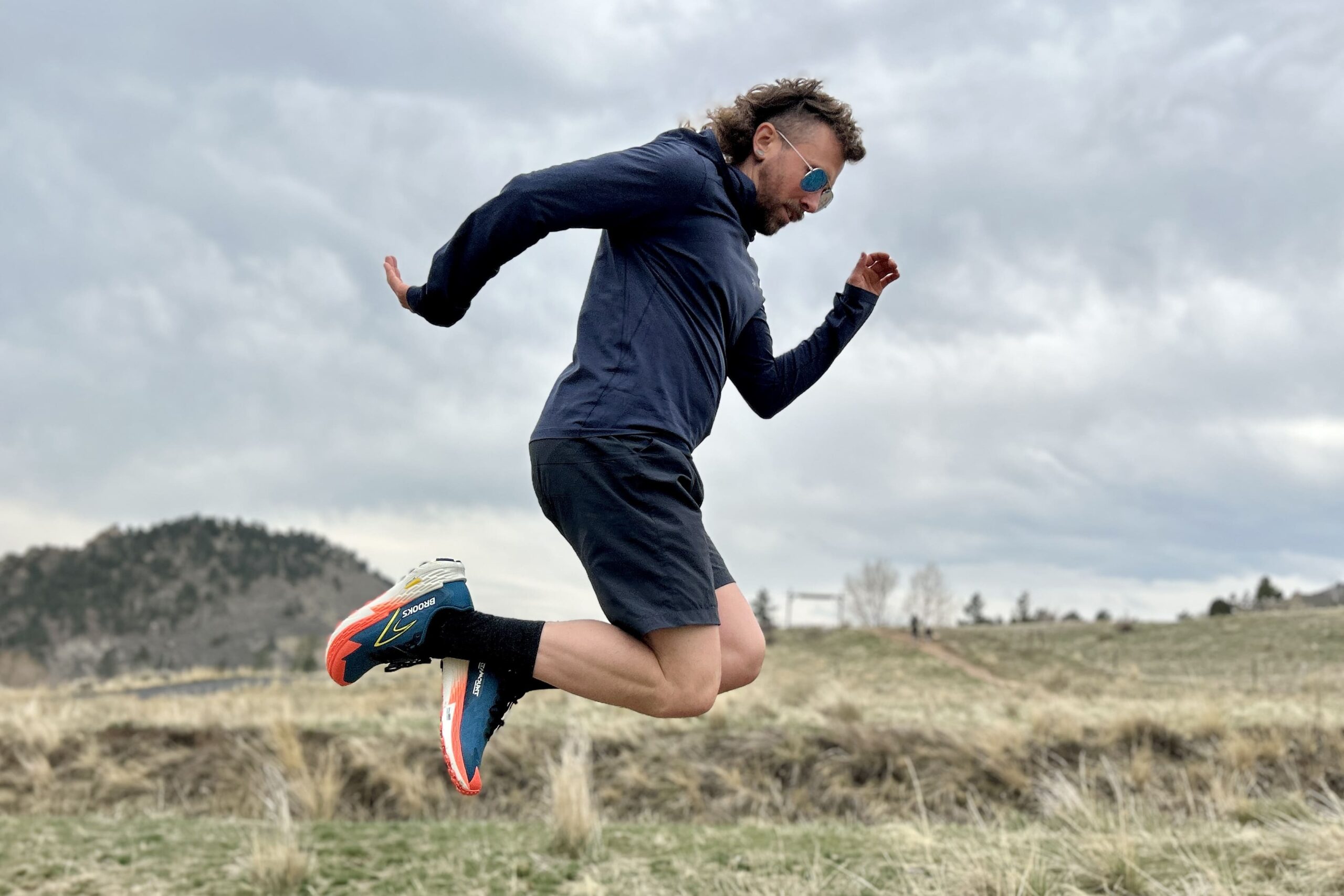
Weight
If you want lightweight shoes, the Catamount 4 is one of our top choices. Tipping the scales at just 1 pound, 3 ounces per pair, they’re one of the lightest on our list. With just enough foam, mesh uppers, and minimal components, Brooks effectively cuts any unnecessary weight. The result? This version is ever so slightly heavier than the Catamount 3, we didn’t notice. They feel pleasantly airy, energetic and fast.
That said, the tradeoff for low weight is less cushioning. Those logging long distances at a time – ie, more than 30 miles – may prefer a softer, more cushioned option. The propulsion plate adds a slightly firmer feel that may not suit every runner’s preference, though we don’t mind one bit for such a low-bulk shoe.
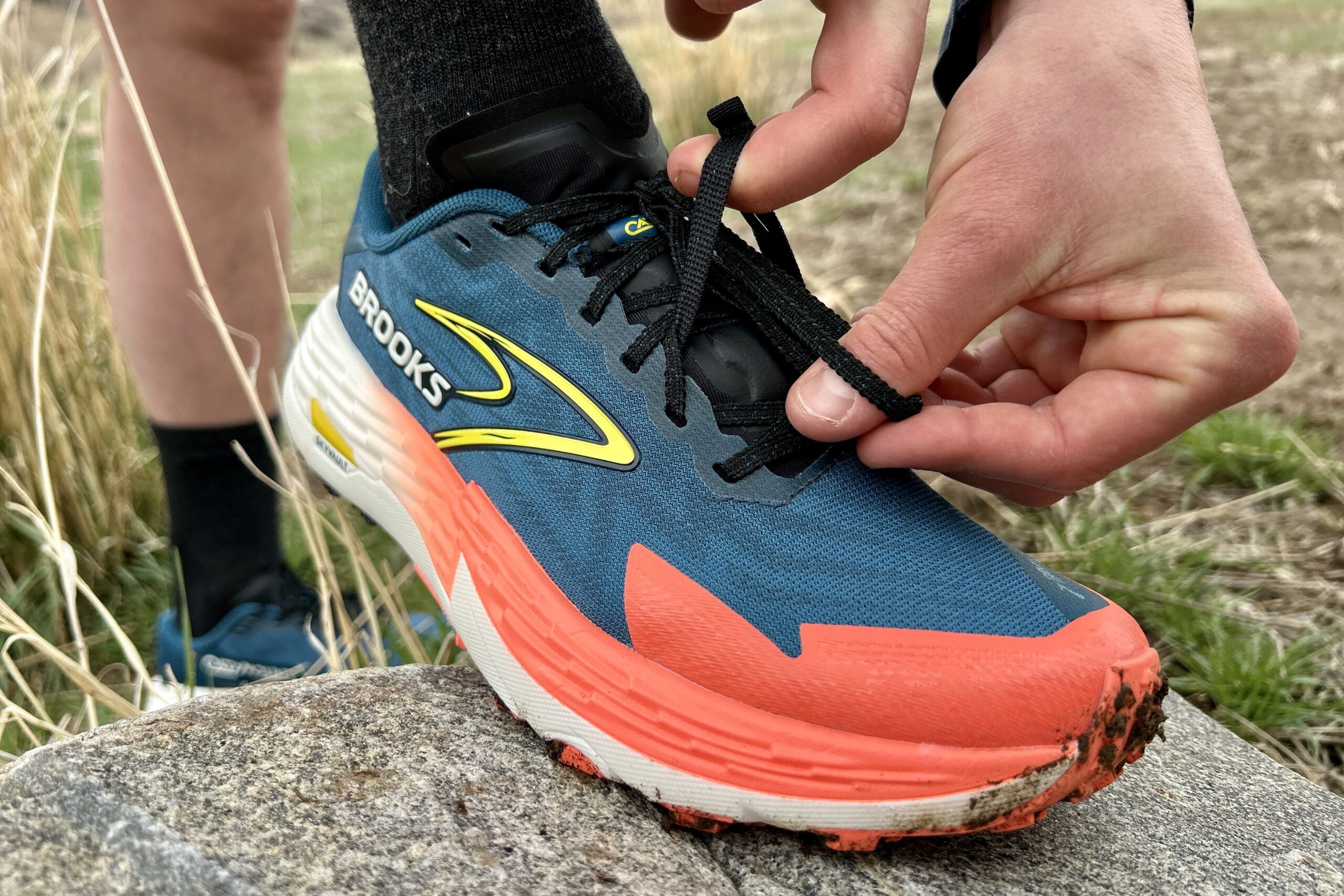
Durability
Many lightweight shoes start breaking down after a few hundred miles, but the Catamount 4 refuses to quit. Ian put his pair through the wringer on long runs and hikes in Colorado’s high alpine backcountry on (and off) trail, and we’re impressed with the durability. The previous version lasted Ian about 700 miles, and we expect the 4’s to last at least as long. The current model has around 500 miles with minimal signs of wear.
The upper is crafted from single-layer TPEE mesh, but still resists stretching and tearing. Reinforced TPU overlays add a bit of protection to the toe cap. Traction may not be the grippiest, but it also is slow to wear down, maintaining structure and tread after miles of mixed terrain. Components like shoelaces, eyelets, and padding have also held up. Overall, these are reliable shoes for long-term use.
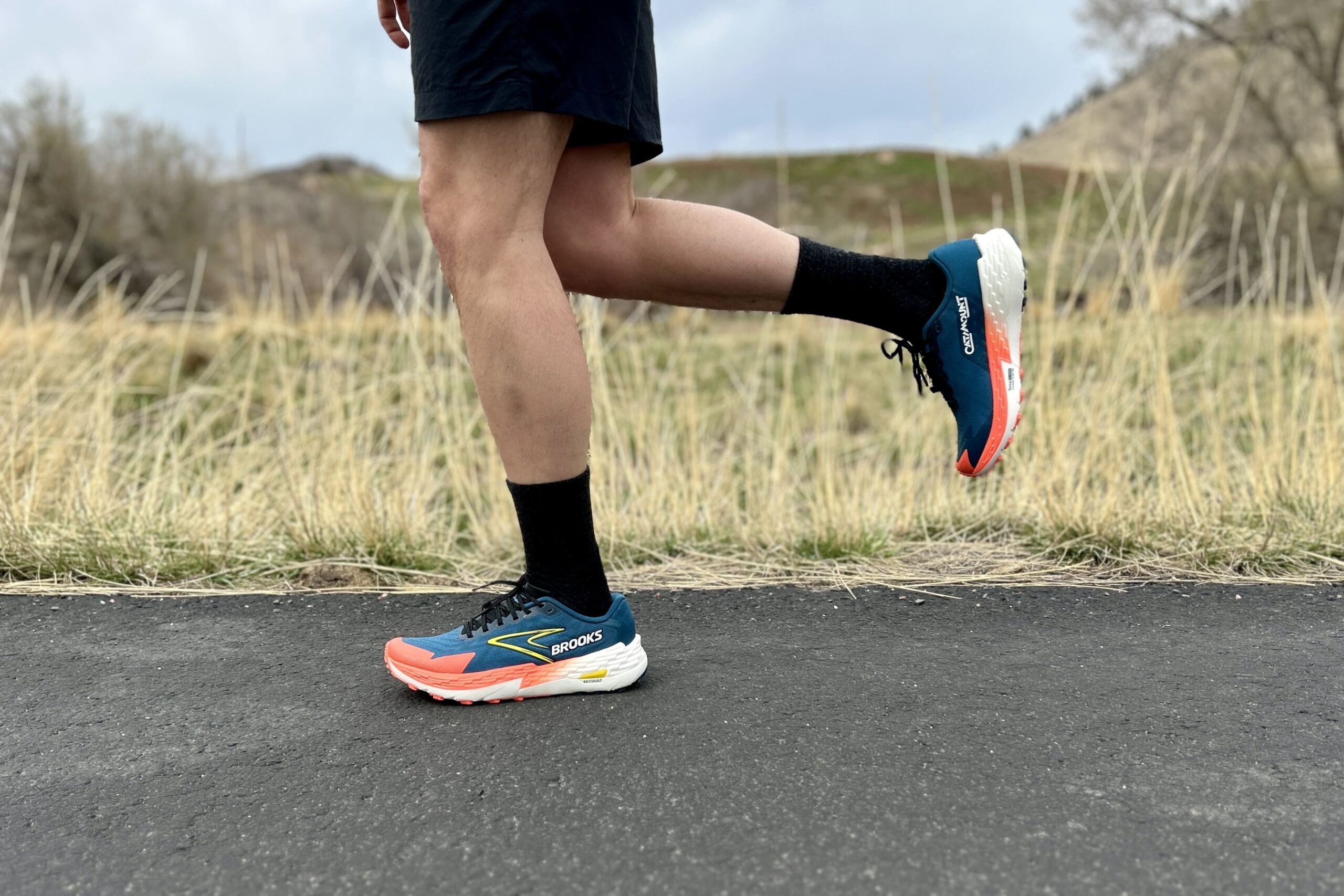
Breathability
This is a lightweight shoe made with single-layer mesh – which means they have stellar ventilation. Paired with thin hiking socks, we’ve run in these everywhere from dry desert trails to humid forest routes above 70° and avoided sweat-soaked socks. They consistently kept our feet cool as the miles added up. Brooks’ no-frills design keeps the air flowing by eliminating overlays on the upper to improve breathability.
The Catamount 4 also dries incredibly fast, even after it’s fully submerged in water. In our experience testing in the field, the Catamount 4 is mostly dry in only 45 minutes. At room temperature, it took about an hour a half to fully dry, beating much of the competition for dry time. On warm summer trail runs with creek crossings and water, these are a great choice.
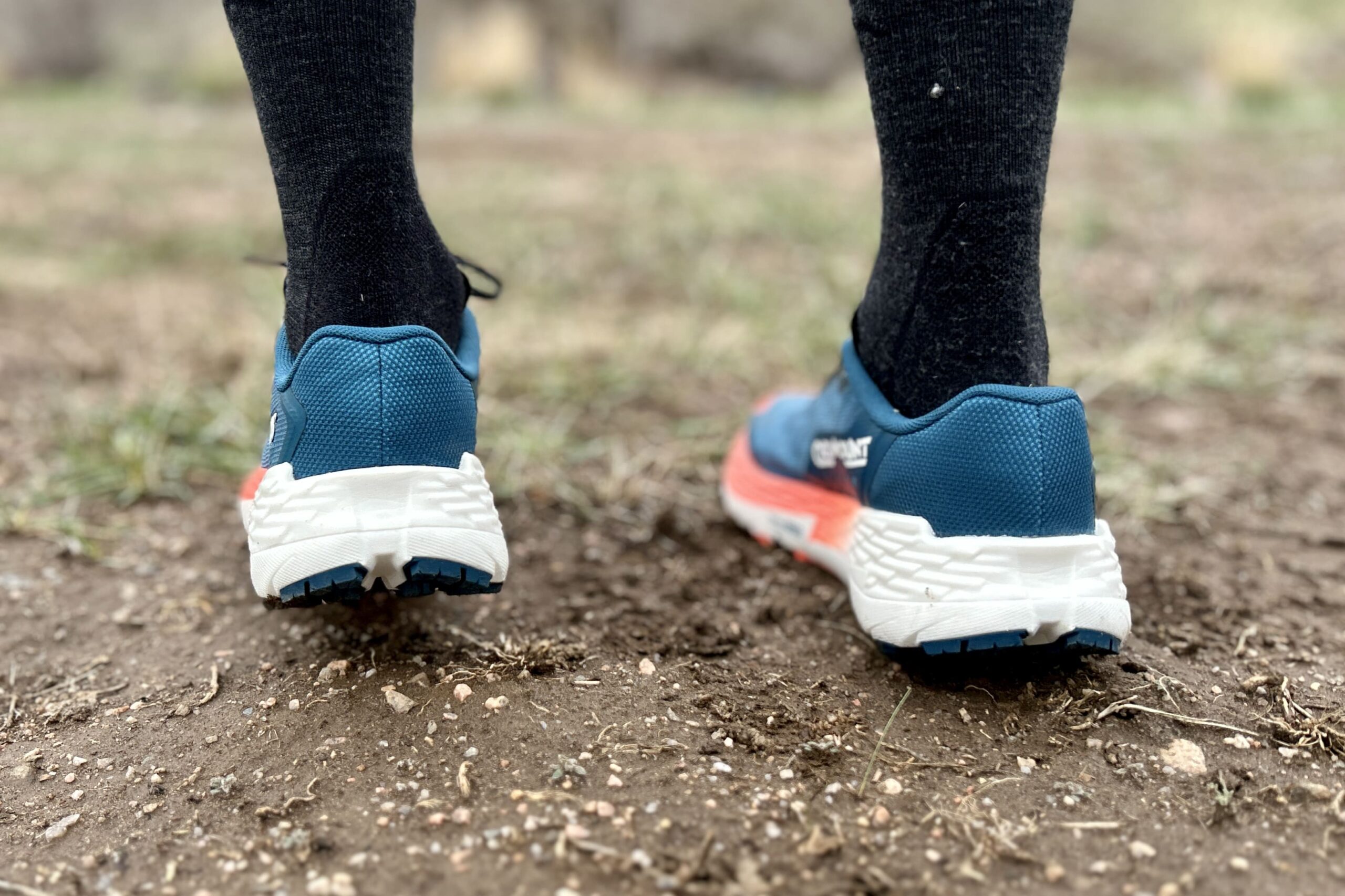
Responsiveness
If you’re looking for a responsive ride, the Catamount 4 delivers. Speed and precision are part of the charm of this trail runner. The updated SkyVault propulsion plate makes this model feel even snappier and faster without sacrificing control. Ian’s climbed tens of thousands of feet of vert in these, and his takeaway is the plate gives a lively feel on ascents that keeps momentum.
Brooks also adds an extra 2mm of foam, incrementally boosting comfort but preserving responsiveness – although it’s still a bit stiff compared to other trail runners. The new plate prioritizes propulsion over flexibility, which can feel a bit awkward on flats and established routes.
The 4 are also on the higher end when it comes to stack height, with 34 millimeters, so it doesn’t offer the ground feel of a shoe like the Nnormal Kjerag or the La Sportiva Bushido III. That said, we think the level of comfort and low weight are worth it.
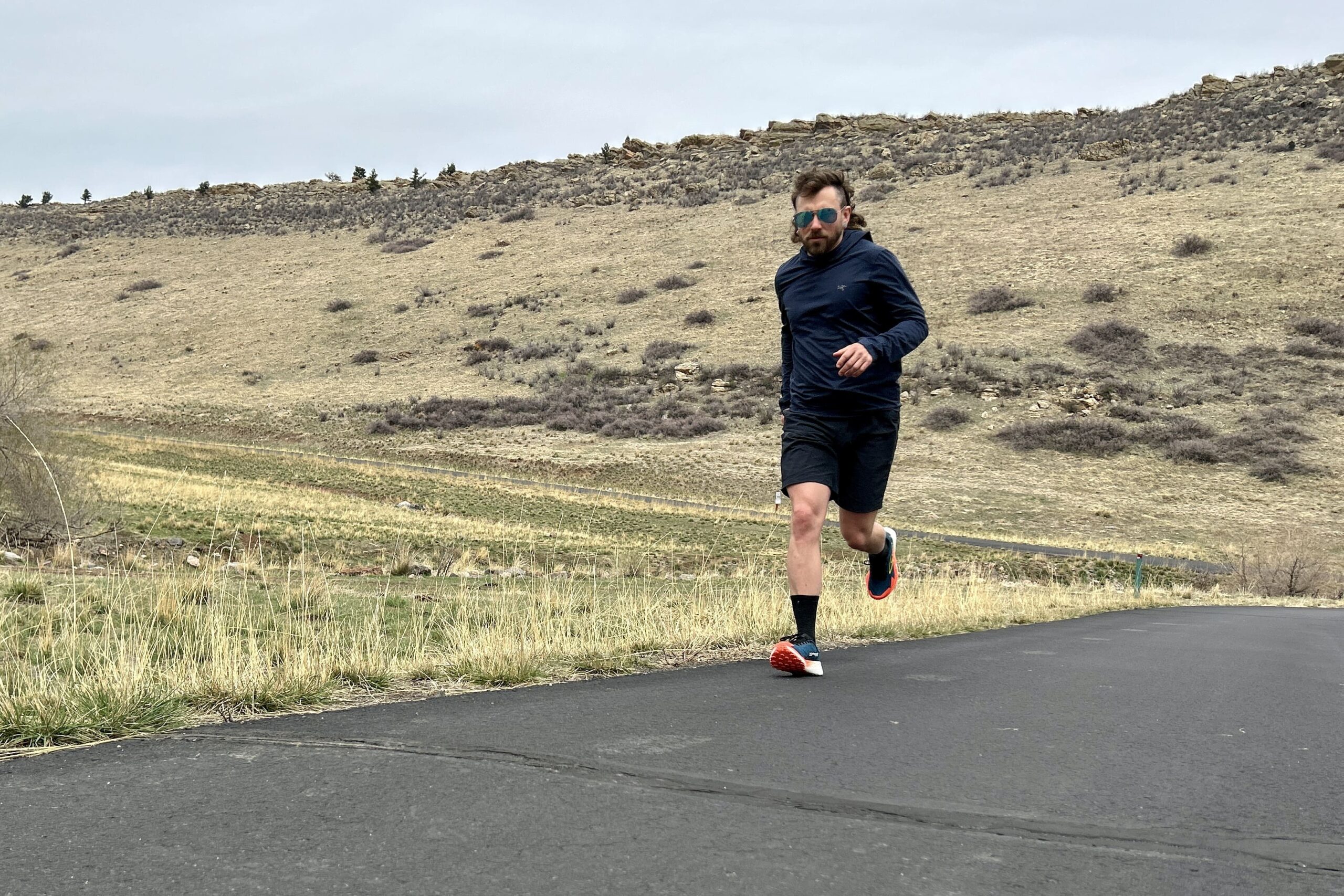
Should You Buy the The Brooks Catamount 4?
If you’re a trail runner looking for a low weight, comfortable, and responsive shoe for established routes, the Brooks Catamount 4 could be your glass slipper. It’s one of the lightest shoes on our list and it feels like it – this shoe is nimble and speedy on most terrain. It’s comfortable thanks to plenty of arch support and excellent laces that hold all day long. With a redesigned plate and a bit of added foam, this shoe offers fast transitions and powerful toe-offs, excelling on everything from steep ascents to flat rolling trails. Plus, this shoe is seriously durable, with many hundreds of miles underfoot before damage begins to show. For speed-focused runners who value efficiency, comfort, and breathability, they’re worth every penny.
We don’t recommend the Catamount 4 if you want tons of cushioning, a wide fit, or a shoe for super rocky or muddy terrain. The lower stack height and simple cushioning offers good groundfeel, but it’s not as soft or adaptive as shoes with tons of foam and a cushier ride. Although it has plenty of arch support and structure, sizing is limited to regular width, so those with wider feet will need to keep looking. We also find the propulsion plate is a bit rigid, making it feel awkward on technical terrain. The updated traction is fantastic on packed trail but doesn’t work as well on mud, sand, and gravel where deeper, wider, and bigger lugs bite the ground better.
It’s spendy, too – but for you’re a serious runner who wants one of the best when it comes to lightweight, responsiveness, and durable construction, the Catamount 4 is our top recommendation for men.
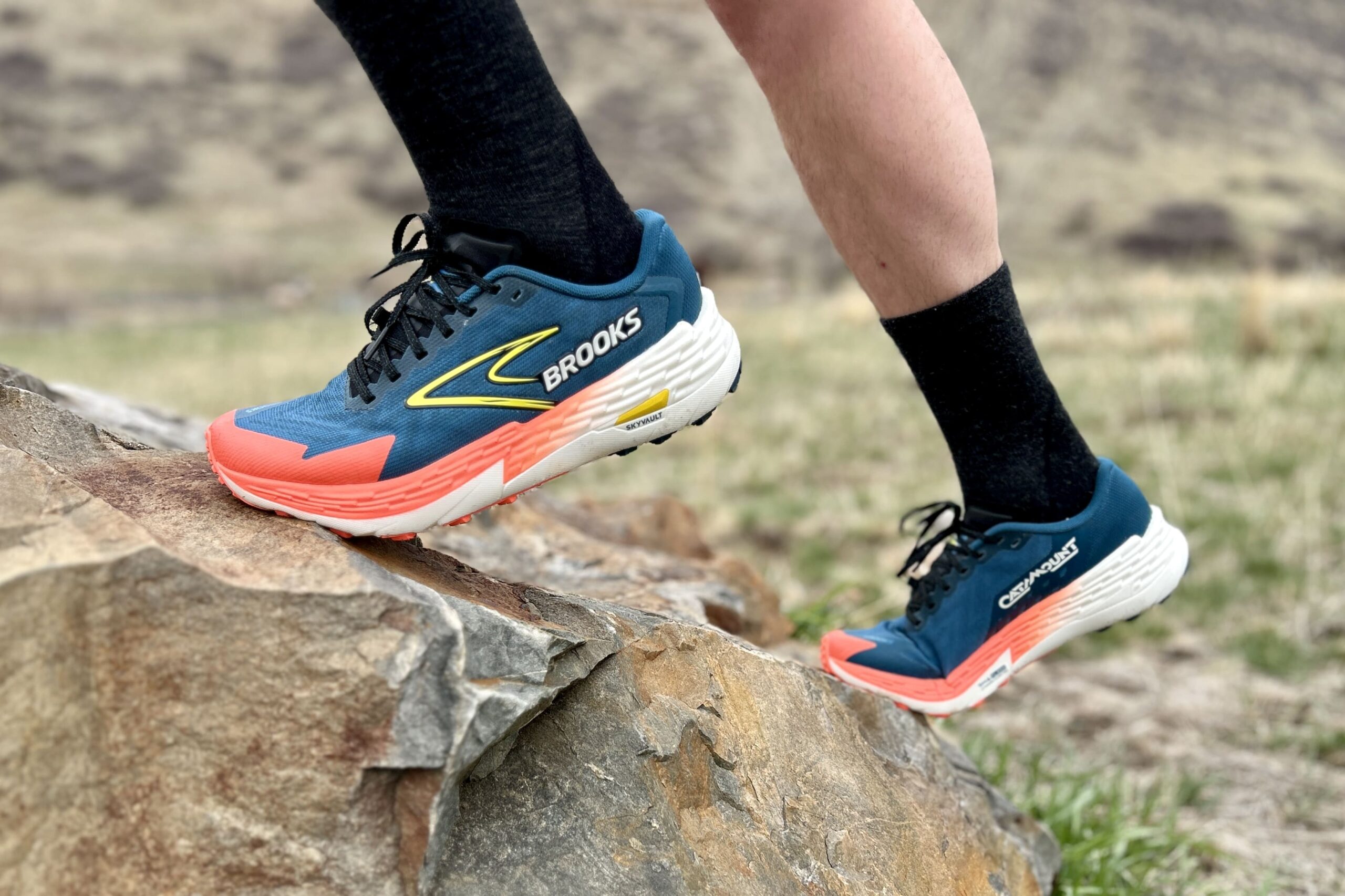
What Other Hiking Shoes Should You Consider?
See our trail running shoes for men list to find out how the Brooks Catamount 4 compares to this year’s other top picks. And consider these top trail runners:
Saucony Peregrine 15 Review: The Saucony Peregrine 14 have similar weight, traction, and comfort to the Catamount 4, making it a close contender. It’s not quite as durable, although it’s more affordable.
Nnormal Kjerag Review: These are some of the lightest shoes out therewith top breathability, durability, and a uniform lug pattern like the Catamount. That said, it doesn’t have an insole and costs much more.
HOKA Torrent 4 Review: The HOKA Torrent 4 has a similar lightweight design and lug pattern, as well as a lower price point. It’s not quite as comfortable and less durable, but it’s a great choice for budget-conscious runners.
The post Brooks Catamount 4 Review appeared first on CleverHiker.


